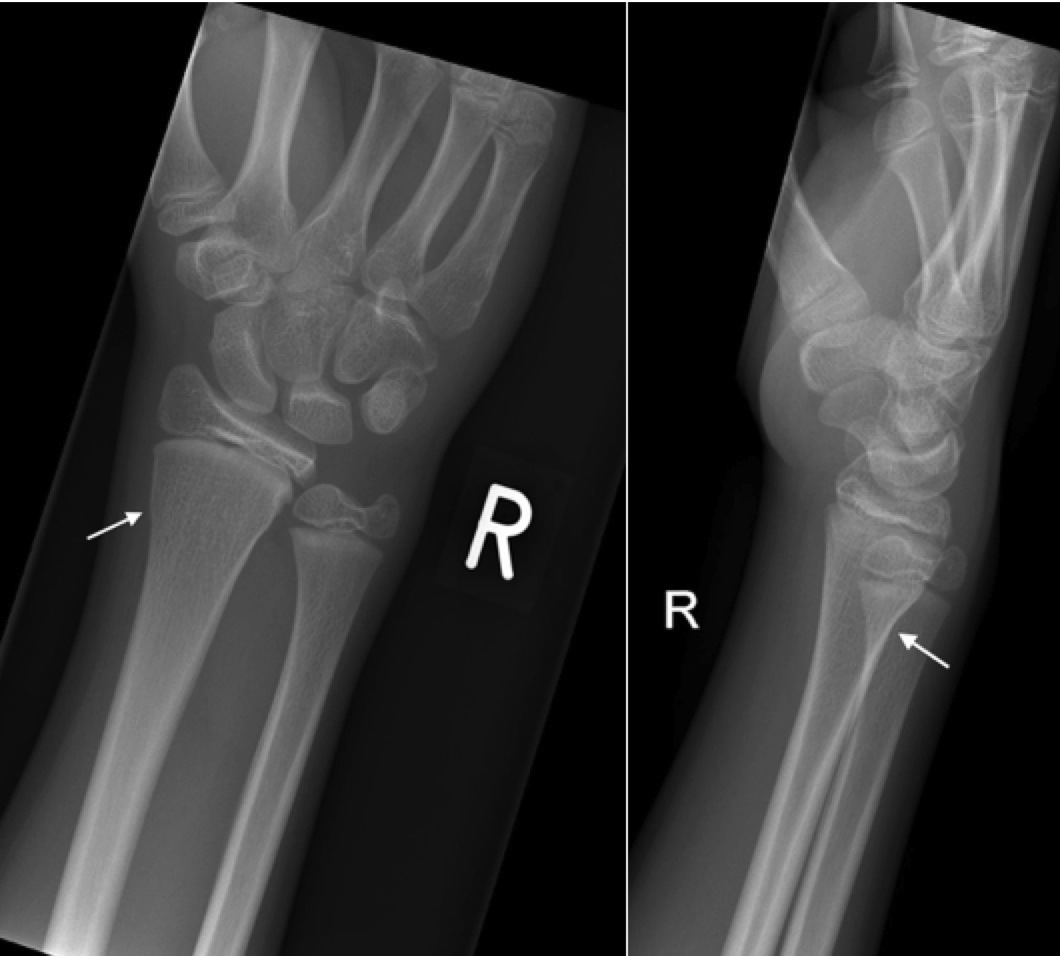
Buckle fracture wrist treatment skin#
Your child's skin over the fracture is swollen, cold, or pale.Your child's hand or fingers feel numb.Your child's pain gets worse, even after he or she rests and takes medicine.Prop the area on pillows or blankets to keep it elevated comfortably. This will help decrease swelling and pain. Elevate the area above the level of your child's heart as often as you can.Cover it with a towel before you place it on your child's skin. Use an ice pack, or put crushed ice in a plastic bag. Apply ice on your child's injury for 15 to 20 minutes every hour or as directed.Ask your child's healthcare provider when he or she can return to sports and other activities. Do not let your child put pressure on the injured area or move it. Have your child rest as much as possible.Acetaminophen can cause liver damage if not taken correctly. Read the labels of all other medicines your child uses to see if they also contain acetaminophen, or ask your child's doctor or pharmacist. Ask how much to give your child and how often to give it. It is available without a doctor's order. Acetaminophen decreases pain and fever.Do not give these medicines to children younger than 6 months without direction from a healthcare provider. Always read the medicine label and follow directions. If your child takes blood thinner medicine, always ask if NSAIDs are safe for him or her. NSAIDs can cause stomach bleeding or kidney problems in certain people. This medicine is available with or without a doctor's order. NSAIDs, such as ibuprofen, help decrease swelling, pain, and fever.Your child will need to wear the support device for 3 to 4 weeks. It will decrease movement of the injured area and allow it to heal. A support device, such as a cast or splint, may be needed to support and protect your child's bone while it heals.X-rays will show if your child has a buckle fracture. How is a buckle fracture diagnosed and treated? Trouble moving, touching, or pressing on the injured area.What are the signs and symptoms of a buckle fracture? Buckle fractures usually occur in the forearm. A buckle fracture is also called a torus fracture. One side of the bone buckles (bulges) when pressure is applied to the other side of the bone. Last updated on Jun 6, 2023.Ī buckle fracture is a break that does not go completely through the bone. Your child should avoid rough play and contact sports, as well as activities such as trampolining and skateboarding for a total of SIX weeks after the injury.Medically reviewed by.

This should improve over the next week or two. Expect the wrist to be stiff for a few days after removal. After three to four weeks the splint should be able to be removed and left off. This is for your child to be reassessed to make sure pain is controlled and the splint is well-fitting. You may be asked to see your GP within 1 week. This is best done overnight so that the splint can be put back on for daytime activities. Hand wash in lukewarm water with mild detergent. Splints are usually more comfortable for the child and easier to care for.


Research has shown that wrist buckle fractures will heal well in a splint which gives support and protection. If severe pain continues, or if there is a lot of swelling or numbness you should bring your child to your local doctor or the Emergency Department for review. Ask your child to move their shoulder, elbow, and fingers, so they don’t get stiff. If your child gets any numbness in the hand, you should loosen the splint. Give your child the dose that is recommended on the packaging for their age and weight. Pain medication like paracetamol or ibuprofen should be given regularly until your child is comfortable. However, the splint can be taken off for bathing, or if you need to wash the splint itself, as long as the removal is well tolerated by your child (Figure 2). A removable wrist splint should be worn for comfort for three to four weeks, day and night (except when it is removed for washing and drying) to reduce the chance of further injury. These fractures heal well with rest and time. This fracture is very common in children and presents as a bulge in the bone as it has been squashed If your child has fallen onto their wrist, they may have an injury known as a “buckle” fracture (Figure 1). The two bones in your child’s forearm are called the radius and ulna.


 0 kommentar(er)
0 kommentar(er)
